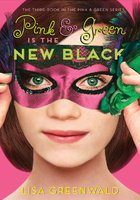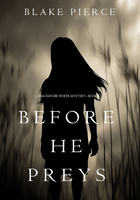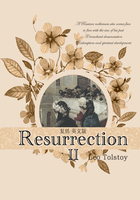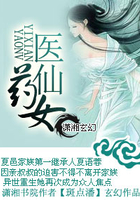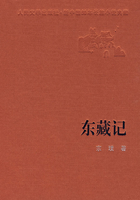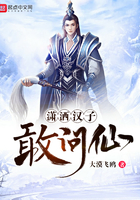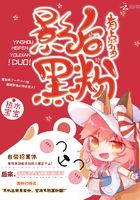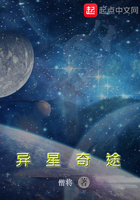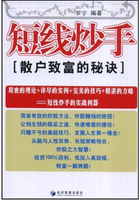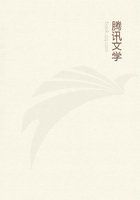Shifting the Context for Community
The context that restores community is one of possibility, generosity, and gifts, rather than one of problem solving, fear, and retribution. A new context acknowledges that we have all the capacity, expertise, and resources that an alternative future requires. Communities are human systems given form by conversations that build relatedness. The conversations that build relatedness most often occur through associational life, where citizens show up by choice, and rarely in the context of system life, where citizens show up out of obligation. The small group is the unit of transformation and the container for the experience of belonging. Conversations that focus on stories about the past become a limitation to community; ones that are teaching parables and focus on the future restore community.
? ? ?
Community occurs in part as a shift in context, the mental models we bring to our collective efforts. It is a new context that gives greater impact to the ways we work to make our communities better. Context is the set of beliefs, at times ones that we are unaware of, that dictate how we think, how we frame the world, what we pay attention to, and consequently how we behave. It is sometimes called a worldview.
The following are the shift in context that would signal a transformation into authentic community:
? We are a community of possibilities, not a community of problems.
? Community exists for the sake of belonging and takes its identity from the gifts, generosity, and accountability of its citizens. It is not defined by its fears, its isolation, or its penchant for retribution.
? We currently have all the capacity, expertise, programs, leaders, regulations, and wealth required to end unnecessary suffering and create an alternative future.
Community is fundamentally an interdependent human system given form by the conversation it holds with itself. The history, buildings, economy, infrastructure, and culture are products of the conversations and social fabric of any community. The built and cultural environments are secondary gains of how we choose to be together.
Principles of Strategy
This context leads to certain principles of a strategy for community transformation:
? The essential work is to build social fabric, both for its own sake and to enable chosen accountability among citizens. When citizens care for each other, they become accountable to each other. Care and accountability create a healthy community. The work is to design ways to bring citizens (including formal leaders, for they are citizens) together so that they experience the “quality of aliveness” Christopher Alexander writes about. This occurs by being highly attentive to the way that we gather.
? Strong associational life is essential and central. Associational life is the volitional aspect of community. It is how citizens choose to build connections for their own sake, usually for common purpose. These are the primary constituency for transformation. In associational life, creating connectedness becomes both an end and a means. Large established systems such as business, government, education, health care, and social services are important but are not essential to community transformation. For systems, building relatedness is mostly a means, not an end in itself.
? Citizens who use their power to convene other citizens are what create an alternative future. A quality of aliveness occurs through change efforts that are energized by citizens and are organic or emergent in nature. A shift in the thinking and actions of citizens is more vital than a shift in the thinking and action of institutions and formal leaders. This is in sharp contrast to the traditional beliefs that better leadership, more programs, new funding, new regulations, and more oversight are the path to a better future. At times all of these are necessary, but they do not have the power to create a fundamental shift.
? The small group is the unit of transformation. It is in the structure of how small groups gather that an alternative future will be created. This also means that we must set aside our concern for scale and our concern for speed. Scale, speed, and practicality are always the coded arguments for keeping the existing system in place. Belonging can occur through our membership in large groups, but this form of belonging reduces the power of citizens. Instead of surrendering our identity for the sake of belonging, we find in the small group a place that can value our uniqueness.
? All transformation is linguistic, which means that we can think of community as essentially a conversation. Then we act on the principle that if we want to change the community, all we have to do is change the conversation. The shift in conversation is from one of problems, fear, and retribution to one of possibility, generosity, and restoration. This is the new context that both creates strong social capital and is created by it.
The overarching intent of these principles is to create communities that operate out of a new context. Transformation can be thought of as a fundamental shift in context, whether the shift is about my own life, my institution, or our community.
Context clearly occurs as individual mindsets, but it also exists as a form of collective worldview. Communities carry a context through the frequently repeated beliefs that citizens hold about the place where they live. The media is one carrier of this context, but it is not its creator.
If transformation is linguistic, then community building requires that we engage in a new conversation, one that we have not had before, one that can create an experience of aliveness and belonging. It is the act of engaging citizens in a new conversation that allows us to act in concert with and actually creates the condition for a new context.
I am using the word conversation in a broad sense—namely, all the ways that we listen, speak, and communicate meaning to each other. So, in addition to speaking and listening, this meaning of conversation includes the architecture of our buildings and public spaces, the way we inhabit and arrange a room when we come together, and the space we give to the arts.
The Existing Context: Community as a Problem to Be Solved
To make a difference in our community, we must begin by naming the existing context and evolving to a way of thinking that leads to new conversations that produce a new context. It is the shift in conversation that increases social capital. Every time we gather becomes a model of the future we want to create. If you really get this paragraph, you probably don't need to read any further.
Our current context is a long way from one of gifts, generosity, and accountability. The dominant context we now hold is one of deficiencies, interests, and entitlement. Out of this context grows the belief that the suffering of communities is a set of problems to be solved.
After we finish giving speeches about the virtues of our neighborhood and city, we love to elaborate their problems. We have studied and reported for years the problems of housing, health care, the environment, youth at risk, race, the disabled, poverty, unemployment, public education, the crisis in transportation, and drugs. These problems are studied by academics and fueled by talk radio and the AM band, which serves as a place for hosts and citizens to argue, debate, and complain about who is right or wrong and who needs to change. Talk radio and TV are the visible barometers of our attachment to the context giving primacy to problems.
Our love of problems runs deeper than just the joy of complaint, being right, or escape from responsibility. The core belief from which we operate is that an alternative or better future can be accomplished by more problem solving. We believe that defining, analyzing, and studying problems is the way to make a better world. It is the dominant mindset of western culture.
This context—that life is a set of problems to be solved—may actually limit any chance of the future being different from the past. The interest we have in problems is so intense that at some point we take our identity from those problems. Without them, it seems like we would not know who we are as a community. Many of the strongest advocates for change would lose their sense of identity if the change they desired ever occurred.
Community-as-problems-to-be-solved has some benefits. It values the ability to implement, is big on doing, has a certain honesty about it, and worships tangible results as the ultimate blessing. You might say that this is what has gotten us this far. It is not that this (or any other) context is wrong; it just does not have the power to bring something new into the world.
To shift to some other context, we need to detach ourselves from the discussions of problems. One way to achieve this detachment is to see that what we now call problems are simply symptoms of something deeper.
For example, what we call “urban problems” are really symptoms of the breakdown of community. Barry Lopez, well-known author on the environment, lives in a town that several years ago suffered a terrible shooting at its high school. He wrote later that after all the TV cameras, advocates for and against gun control, grief counselors, and experts on youth and public education left town, the citizens could face the reality that the shooting was symptomatic of a breakdown in that community—a breakdown in citizens' capacity to create a place where this kind of tragedy could not happen. His analysis has stayed with me.
The Limitations of Symptoms
The conventional approach to community building and development addresses problem areas such as public safety, jobs and local economy, affordable housing, youth, universal health care, and education. Every city has thousands of institutions, programs, and agencies all committed to serving the public good. From the standpoint of building community and social capital, these institutions and programs are just treating the symptoms. Safety, jobs, housing, and the rest are symptoms of the unreconciled and fragmented nature of the community—what Lopez calls the breakdown of community. This fragmentation or breakdown creates a context where trying to solve the symptoms only sustains them. Otherwise, why have we been working on these symptoms for so long and so hard; and even with so many successful programs, why have we seen too little fundamental change?
The real intent of community transformation is to shift the umbrella under which the traditional problem solving, investment, and social and community action now take place. It is aimed at the restoration of the experience and vitality of community. It is this shift in context, expressed through a shift in language, that creates the conditions where traditional forms of action can create an alternative future.
When we shift from talking about the problems of community to talking about the breakdown of community, something changes. Naming the challenge as the “breakdown of community” opens the way for restoration.Holding on to the view that community is a set of problems to be solved holds us in the grip of retribution.
At every level of society, we live in the landscape of retribution. The retributive community is sustained by several aspects of the modern community conversation, which I will expand on throughout the book: the marketing of fear and fault, gravitation toward more laws and oversight, an obsession with romanticized leadership, marginalizing hope and possibility, and devaluing associational life to the point of invisibility.
Getting Our Story About Story Straight
One form of the retributive community conversation is the story we tell ourselves about who we are. Getting clear about the nature of story is important in appreciating the power of the existing context. Especially in those places where history and the past seem overridingly restraining.
Storytelling plays a noble and historic role in our lives and in society. Stories can give us a narrative to guide and instruct us. They are crucial to our knowing who we are; they provide a sense of identity. Some stories, however, become the limitation to creating anything new. Werner Erhard has been so insightful about this. We need to distinguish between the stories that give meaning to our lives and help us find our voice, and those that limit our possibility.
The stories that are useful and fulfilling are the ones that are metaphors, signposts, parables, and inspiration for the fullest expression of our humanity. They are communal teaching stories. Creation stories, wisdom stories, sometimes personal stories that have a mythic quality, even if they come from the person sitting next to me. An example is from Adam Kahane's book on the shifting moment in his work in South Africa, Solving Tough Problems. A personal story told for the first time, or shared for the first time in public, can have a transforming effect.
In Russia, even the past is unpredictable.
Author unknown
Theater, movies, song, literature, and art are storytelling of the highest order. These are the mediums for building an individual sense of what it means to be human. The arts are an essential part of the story of what it means to be a human being and a community.
There are other kinds of stories that in their telling become a limitation. Limiting stories are personal versions of the past. They are stories about the conclusions we drew from events that happened to us. Other limiting stories are those that are rehearsed or make the point that the future will be a slightly modified continuation of the past out of which the story arose. Stories of this nature place us as victims of events or even fate.
Limiting stories are the ones that present themselves as if they were true. Facts. Our stories of our own past are heartfelt and yet are fiction. All we know that is true is that we were born. We may know for sure who our parents, siblings, and other key players in our drama were. But our version of all of them, the meaning and memory that we narrate to all who will listen, is our creation. Made up. Fiction. And this is good news, for it means that a new story can be concocted any time we choose.
Same with community. The stories of violence, crime, wrongdoing that are constantly told are also fiction. The events may have happened, but the versions that let those events define who we are as a community—such as whether it is safe to go downtown, whether we need new leaders, whether people in this place are friendly, whether we are headed up or down—are all fiction. The decision to tell those stories over and over again as if they were defining truths creates the limitation against an alternative future.
This is why therapy and healing is really the process of re-remembering the past in a more forgiving way. The willingness to own up to the fictional nature of our story is where the healing begins. And where the possibility of restoration resides.
In this way, restoration can be considered the willingness to complete and eliminate the power out of the current story we have of our community and our place in it. This creates an opening to produce a new collective story. A new story based on restorative community. One of possibility, generosity, accountability.


